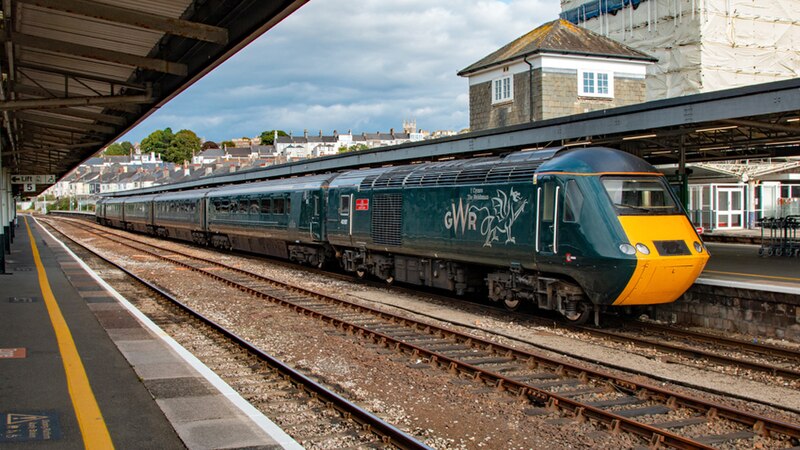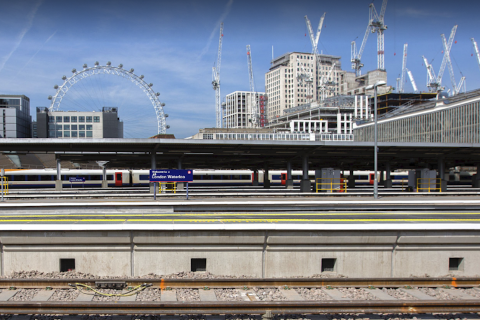British High Speed Trains set for Mexico

Venerable but not finished yet. They may be withdrawn from almost all operations in the UK, but the iconic High Speed Trains (HST) are gearing up for an international voyage, leaving their familiar tracks to find a new home in Mexico, with potential for other overseas destinations. Examples of the trains, credited as the fastest diesels in the world and as the trains that saved Britain’s long distance rail travel, could be set for a sunset in the sunshine of Mexico. Units that last saw service in the UK with CrossCountry Trains, LNER, and GWR have been observed on the quayside at British ports, embarking on Transatlantic voyages.
Want to read more?
You have read all of your free premium articles for this month. Please become a subscriber to keep reading.
Subscribe now!
Take advantage of our exclusive offer to get full access to all premium content.





I doubt this. Why would a new line in Mexico be built to the British loading gauge?
Most if not all high speed lines in the world use the British standard Track gauge ie 4 feet 8.5 inches, meaning the HST rolling stock will be fine.
The Loading gauge, ie the maximum dimension of rolling stock which is safe to run on a given railway, varies much more widely, both between and even within countries. For example, HS2 is designed to the Continental loading gauge allowing trains of up to 15ft or 4.7m compared to the normal British 12 ft or 3.91m.
Most loading gauges for standard rail gauge lines are roomier than the UK standard. If that is the case for Mexico HSTs will easily fit with room to spare. A bigger issue might be access: HSTs, like all UK trains, are designed for high platforms. These are less common in many other countries, and HSTs have no descending steps to enable low platform access.
I don’t think they’re for the Maya train because all of the trains for that project are being provided by Alston and are being built in Mexico I think they are for the newly modernized interoceanic corridor which will have a non electrified line and will have passenger train service as well as cargo and these trains would be perfect
Nice to see the Hsts having a new lease of life, I serviced the Mtu engines on the fleet run by Fgw till my retirement.
Perhaps I should apply for a job in Mexico!
In reply to Dave Simpson, trains designed for high platforms use portable steps to take passengers up from low platforms.
Loading gauge won’t be an issue. I’m sure this upgraded line will be built to the AAR loading gauge. HST’s will need hi-level platforms. If the platforms are built to AAR clearance, there will be wide gaps at HST doors.
Easy solution – gauntlet tracks. A concern will be if the air-con is up to operating in a tropical climate. I don’t the cooling capacity of a/c systems fitted to HST coaches, but unless they are at least 7-8 tons (1 ton = 200 BTU/min = 3.517 kJ/s = 3.517 kW) they will struggle.
If this is just the power cars (and presumably also trailer cars) then I wonder what coaching stock they will be hooked to.
Miles Thomas, 11 mark 3 coaches have been shipped over with the HSTs.
Miles Thomas, 11 mark 3 coaches have been shipped over with the 3 power cars.
I hope that when the Mexicans refurbish the HST vehicles they will finally modify the last of the vehicles which had air conditioning intakes near the disc brakes. This problem was identified decades ago, but modifications proceeded at a snail’s pace. The smell from the brake pads was dreadful!
These trains will be used in another train project called interoceanic line that will connect the two oceans through the Tehuantepec isthmus intended for the crossing of goods in a stretch of 186 miles.
This makes me sick!
Fake. These trains will be used for the interoceanic corridor of the Isthmus of Tehuantepec. The Mayan route trains are newly manufactured Astolm. Do your research well.
I too thought the HST’s were destined for other parts of the Mexican rail system. I certainly hope so as Tren Maya line runs 100m from my place and the HSTs are noisy and relatively heavy. I would be concerned that they disappear into Cenote’s. Will they backup the Alstom’s when they fail?
The Mexican’s did showed how railways can be built in less than geological time and it looks really good from what I have seen. I hope to take a ride soon after it reaches Playa Del Carmen.